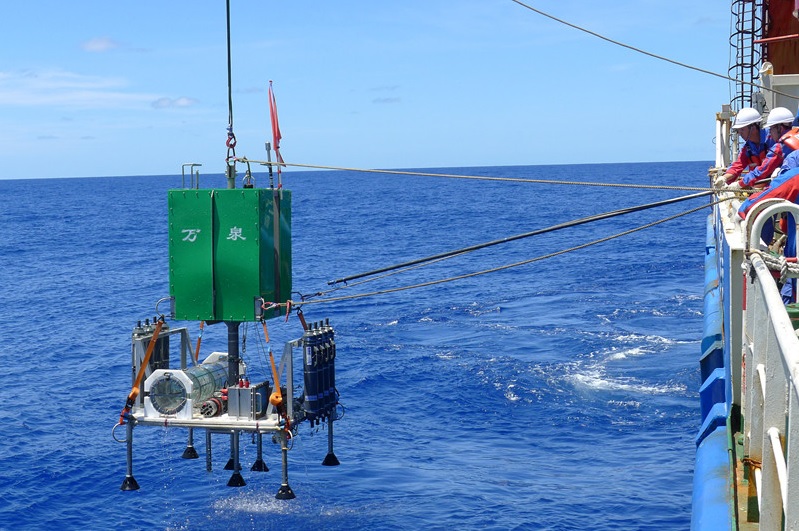Human never stop nature exploration especially under extreme conditions. The
Mariana Trench is the deepest part (10,994 m) of the world's oceans, located in the western Pacific Ocean. The development of full ocean depth expedition equipments requires high energy density power sources. In recent years, China has made remarkable achievements in the field of deep-sea power batteries. The silver-zinc battery with oil-filled pressure system has been successfully demonstrated in the manned submersible Jiaolong for sustainable period of 6 hours under depth of 7,000 m. However, the silver-zinc battery has a relatively low energy density (less than 60 Wh/kg) and a short cycling life (50 times), which cannot meet requirements for long endurance and full ocean depth applications (11,000 m).
Compared with the silver-zinc batteries, lithium batteries show a significant advantages in energy density (180 Wh/kg), cycling life (500-1,000 times) and safety. However, the volatile flammable organic electrolyte in traditional lithium batteries may lead to thermal runaway or even explosion, due to being overcharged or internal short circuit. These issues are more prominent in the 3,000 meters under the sea. The solid state electrolytes with enhanced safety can be compatible to lithium metal as the anode of the battery, increasing the battery energy density up to 400 Wh/kg (double that of the commercial lithium-ion battery, and 6 times that of silver-zinc battery). Such solid state electrolyte based batteries can provide adequate power output for deep-sea space station and deep-sea robot.
A research team headed by Prof. CUI Guanglei from the Qingdao Institute of Bioenergy and Bioprocess Technology (QIBEBT) of the Chinese Academy of Sciences (CAS), has been focusing on high-performance and high-safety lithium batteries by using "
Rigid-flexible Coupling" type of solid electrolyte system. The optimum coupling of ion transport mechanism and pressure has been realized through finely tuning the molecular structure of electrolytes and ionic conductivity. This system possesses several features, such as high safety, long cycling life, and improved working depth. The team also innovated the lithium metal interface modification technology and in-situ interface repair technology for the solid state lithium batteries tested in the Mariana Trench recently.
From Jan 15 to Mar 23, 2017, the solid state battery system (namely QIBEBT-I) as the only power supply was assembled on the lander Wanquan (Figure 1) and brought to the Mariana Trench by the
CAS deep-sea expedition team. The lander realized 9 times of successful dives, of which 6 times down to 10,000 m depth (maximum dive depth of 10,901 m). The cumulative working time and the longest continuous running time of QIBEBT-I were 134 hours and 20 hours, respectively.
Nowadays, the team at QIBEBT is moving forward to solid state lithium battery with better performance for deep-sea expedition.
 Figure 1. The solid state battery system (namely QIBEBT-I) assembled on the lander Wanquan (Image by QIBEBT)
Figure 1. The solid state battery system (namely QIBEBT-I) assembled on the lander Wanquan (Image by QIBEBT)

